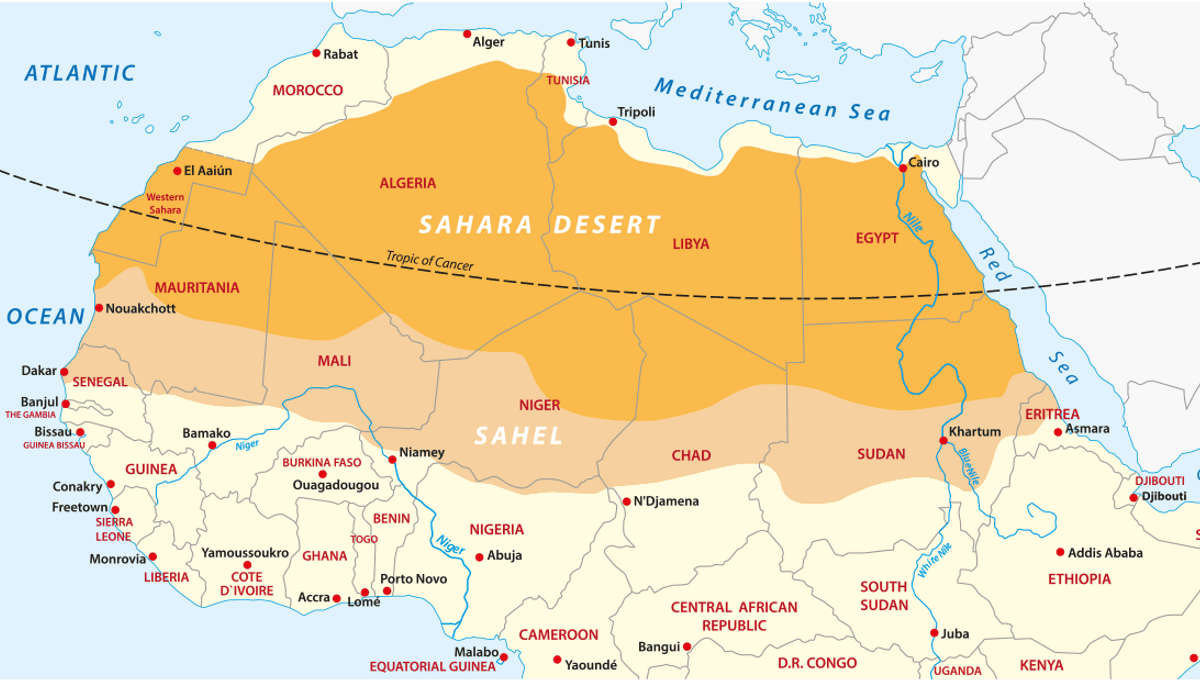
We love a semi-hypothetical hare-brained scheme. From blowing up the moon to firing a bullet through Jupiter, discovering the more out-there plans of history is always a wild ride. Now we’re adding “creating a sea in the middle of the Sahara” to the already wild list of what not to do in terms of planet-altering events.
There have actually been multiple plans to flood parts of the Sahara, since large sections of the world’s largest sand desert are actually below sea level. It is worth remembering that the Sahara Desert is a vast area covering some 9.2 million square kilometers (5.7 square miles) across much of north Africa.
The idea first started with Scottish engineer Donald McKenzie who wanted to flood the El Djouf basin, turning it into what he dubbed the Sahara Sea. He proposed the creation of a 644-kilometer (400-mile) long channel from Morocco into the basin, thereby creating an inland sea roughly the size of Ireland, or 96,560 square kilometers (60,000 square miles).
In the 1870s, Captain François-Elie Roudaire of the French army was inspired by the completion of the Suez canal and suggested a 193-kilometer (120-mile) long canal that would connect the Mediterranean Sea to part of the Sahara desert called the Chott el Fejej in southern Tunisia, thus flooding over 4,828 square kilometers (3,000 square miles) of land. The chotts are areas of salt plain that are saltwater lakes for half the year.
The plan was given the blessing of Ferdinand de Lesseps, a French diplomat who was something of a celebrity after his work in creating the Suez canal. The cost at the time was billed at around 25 million francs. The idea was to open up more trade routes for French ships. De Lesseps and his friends wanted to make the middle of North Africa a much wetter and more fertile place. Despite Roudaire’s work on the project the plan never came to fruition, though several exploratory trips to the area were funded. The discovery that the area was not actually below sea level as well as the rising costs meant the ambitious plans were never realized.
While the plan ultimately failed, it did inspire author Jules Verne to include a construction of a canal in his 1905 novel Invasion of the Sea, in which an earthquake ultimately causes the creation of an inland sea in north Africa.
A further plan to create a sea in the middle of the Sahara was suggested in Egypt. Project Plowshare was an US Atomic Energy Commission initiative to use the “peaceful” denotation of nuclear bombs create the channels needed to flood the Qattara Depression which lies 60 meters (197 feet) below sea level. However the use of peaceful nuclear detonations was banned by several international treaties and Project Plowshare was discontinued in 1977.
More recently, in 2018, a Silicon Valley firm called Y Combinator unveiled their idea to combat global warming by flooding the Algodones Dune desert area in California . Their plan was to create millions of 0.4-hectare (1-acre) square micro-reservoirs that would allow algae to grow, which would act as a carbon sink. Unsurprisingly – as they put the price tag on this idea at around $50 trillion – the project has yet to take off.
Source Link: The Bizarre Plan To Use Nuclear Bombs To Create An Inland Sea In The Sahara